Preliminary Assessment of the KN-24 Missile Launches
North Korea test fired a pair of KN-24 ballistic missiles on Saturday, March 21, 2020. According to a statement from South Korea’s Joint Chiefs of Staff, the early morning launches occurred at 6:45 and 6:50 AM local time, from a site near the city of Sonchon in North Pyongan Province. The missiles reached maximum heights of about 50 km, and ground distances of roughly 410 km. Photographs released by North Korean media and posted on Twitter (Figure 1) show at least one of the missiles impacting a small island in the East Sea (Sea of Japan) used as a target in prior North Korean missile tests.
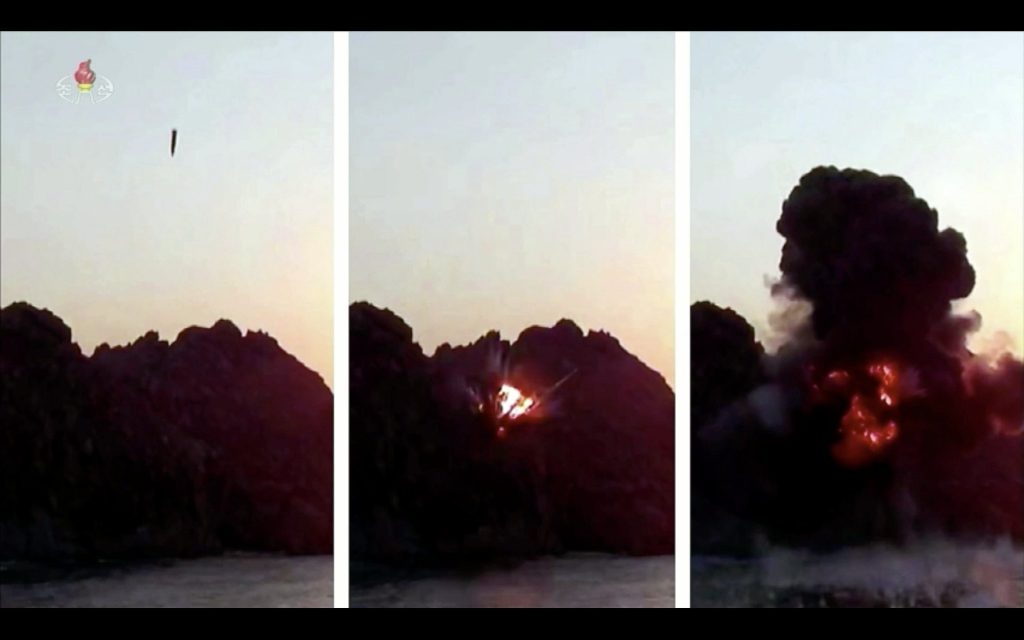
Saturday’s firings mark the fifth and sixth test flights of the KN-24, a single-stage, solid-fuel missile that outwardly looks like the US MGM-140 Army Tactical Missile System (ATACMS). ATACMS is a close-range ballistic missile designed to support battlefield operations, so it is reasonable to assume that North Korea views the KN-24 similarly. The fact that the two KN-24s were launched only five minutes apart, an improvement from the roughly 15-minute separation between coupled firings of August 9 and 15, 2019, is consistent with a system developed for warfighting missions.
South Korean officials stated that the KN-24 flew on a “variable ballistic trajectory,” indicating that the missile’s aft-mounted fins were employed to maintain aerodynamic control of the missile over its entire flight, including its dive toward the target. When combined with an inertial navigation unit updated with satellite-guidance data, the KN-24 is, in principle, capable of precision delivery of its warhead, as detailed previously by 38 North. There is no direct evidence that the KN-24 is equipped with a radar or optical sensor to guide the missile into a specific target during its plunge toward the earth; the nosecone is certainly long and wide enough to accommodate a terminal-homing sensor.
Photographic evidence of the KN-24 striking a rocky outcropping off North Korea’ eastern shoreline, if authentic, suggests the missile is at a minimum equipped with satellite-guidance receivers, as the island is just 100 meters in length along the KN-24’s flight direction. If the KN-24 can consistently hit the island, we can estimate its accuracy to be considerably less than the 100 meters. However, while we have some anecdotal evidence from the released photographs that one of the KN-24s struck the island, we have no information about the fate of the second missile fired.
Is the KN-24 an ATACMS Clone?
While the KN-24’s exterior features are quite similar to those of ATACMS, there are some observable differences between the two, including the aft-mounted aerodynamic fins (see Figure 2). ATACMS, however, employs aft fins that are foldable, allowing the missile to fit into a cylindrical launch tube mounted on a road-mobile vehicle, as shown in Figure 3. The KN-24’s fins, while movable during flight, do not fold to accommodate a cylindrical tube. The North Korean missile is therefore deployed and launched from a rectangular canister which is bulkier, although it is also mounted on a robust mobile platform.
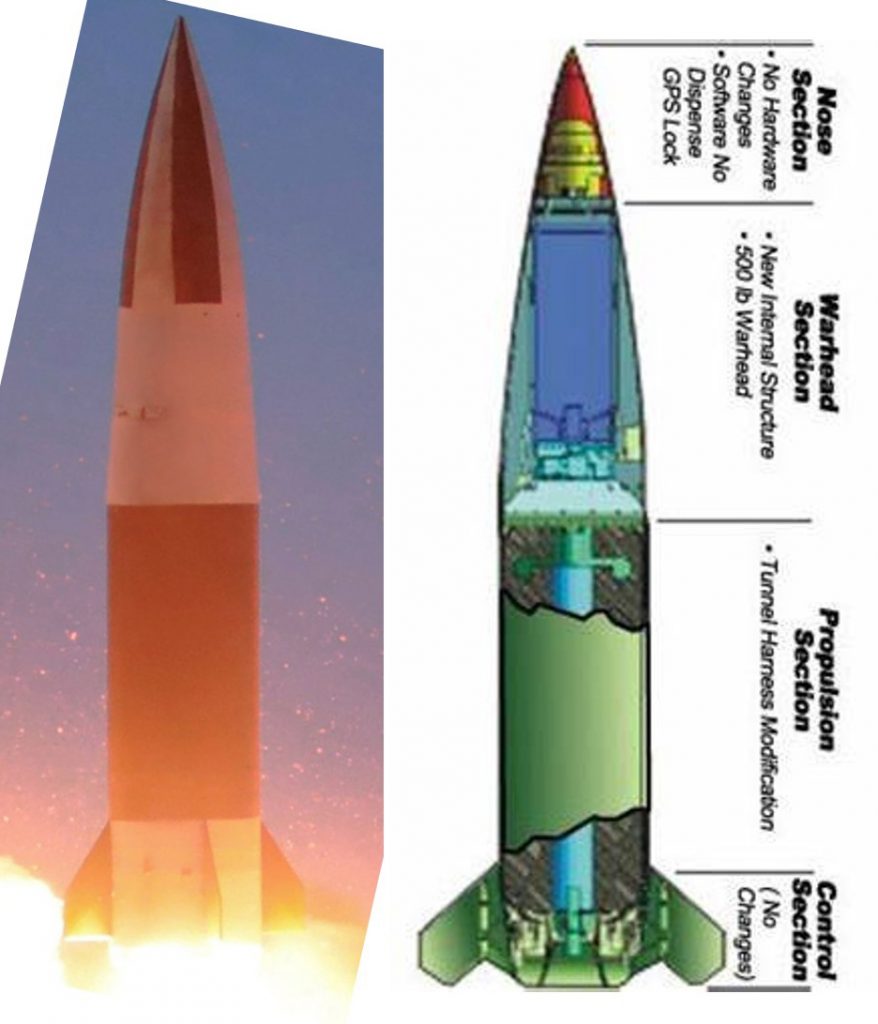
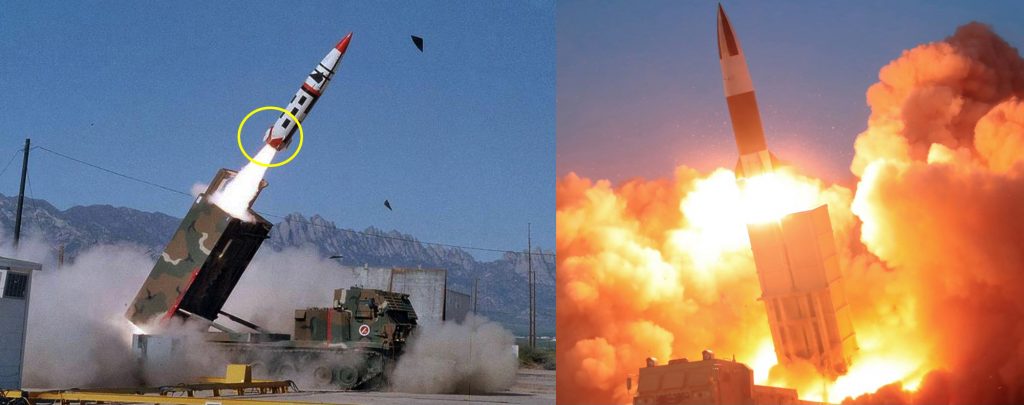
Additionally, the KN-24 can fly at least 410 km, while the ATACMS covers just 300 km. ATACMs, developed, tested and fielded more than two dozen years ago, is equipped with a variety of warheads weighing between 160 and 560 kg. The US is a founding member of the Missile Technology Control Regime (MTCR), which restricts the transfer of missiles that fly more than 300 km when armed with a 500 kg payload. ATACMS has been supplied to several US allies over the years, so it is reasonably safe to assume that the missile’s performance does not exceed the MTCR thresholds. The payload mass of the tested KN-24 is not known, although the payload bay is certainly large enough to carry a 500 kg warhead.
Unfortunately, there is no reliable data on the KN-24’s external dimensions. Its length-to-diameter ratio is very nearly the same as ATACMS, suggesting it might also share the same absolute dimensions and overall lift-off mass. However, given the greater range achieved by the KN-24, it is possible that the North Korean missile is larger. To better assess the size of the KN-24, the curve plotted in Figure 4 depicts the relationship between the propellant mass and the diameter of a North Korean missile launched on Saturday. Interestingly, the US ATACMS, the Russian Tochka (and likely the North Korean KN-02 Toksa) and Iskander-E fit reasonably well along the curve.
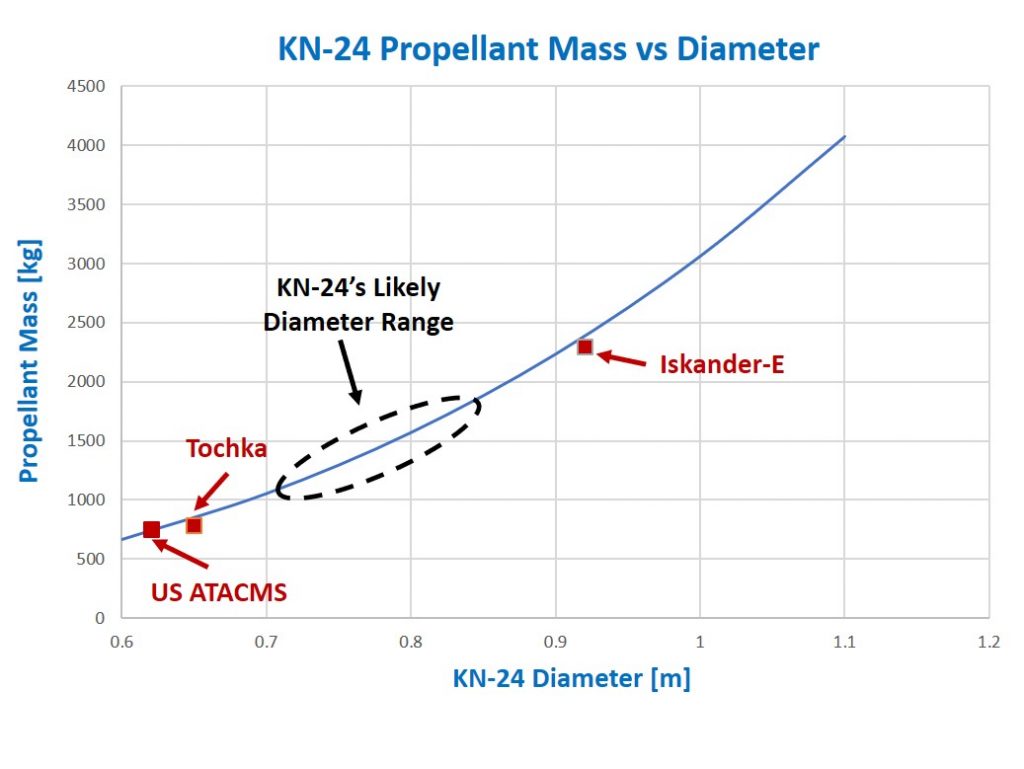
It is also interesting that if the KN-24’s diameter measures 640 mm, like those of the Russian Tochka and North Korean KN-02 Toksa missiles, instead of the 610-mm diameter of the ATACMS, the propellant mass grows slightly. While employing the same solid-rocket motor for two systems would promote manufacturing efficiency, it is hard to see how the KN-24 could fly almost four times farther than the KN-02, unless the KN-24 was tested with a very light warhead.
It seems more reasonable to conclude that the KN-24 is significantly larger than ATACMS. How much larger is difficult to discern, although a missile diameter of between 700 and 850 mm seems likely.
Is the KN-24 a Tactical or Strategic Weapon?
After the tests, Kim Jong Un reportedly claimed that the “new-type weapon systems which we have recently developed and the tactical and strategic weapons systems in the development stage will make decisive contributions to the realization of the Party’s strategic plan to make a radical change in the national defence strategy.”[1] The quote does not make clear if the Supreme Leader views the KN-24 itself as a tactical or strategic weapon, as he spoke of “recently developed” systems and those “tactical and strategic” weapons that are assertedly being developed. The KN-24 is likely in its late-development phase based on North Korea’s prior practice of deploying missiles to military units after only a handful of tests. After Saturday’s fifth and sixth known tests of the KN-24, it is easy to judge the missile very nearly combat ready, or soon to be operationally deployed.
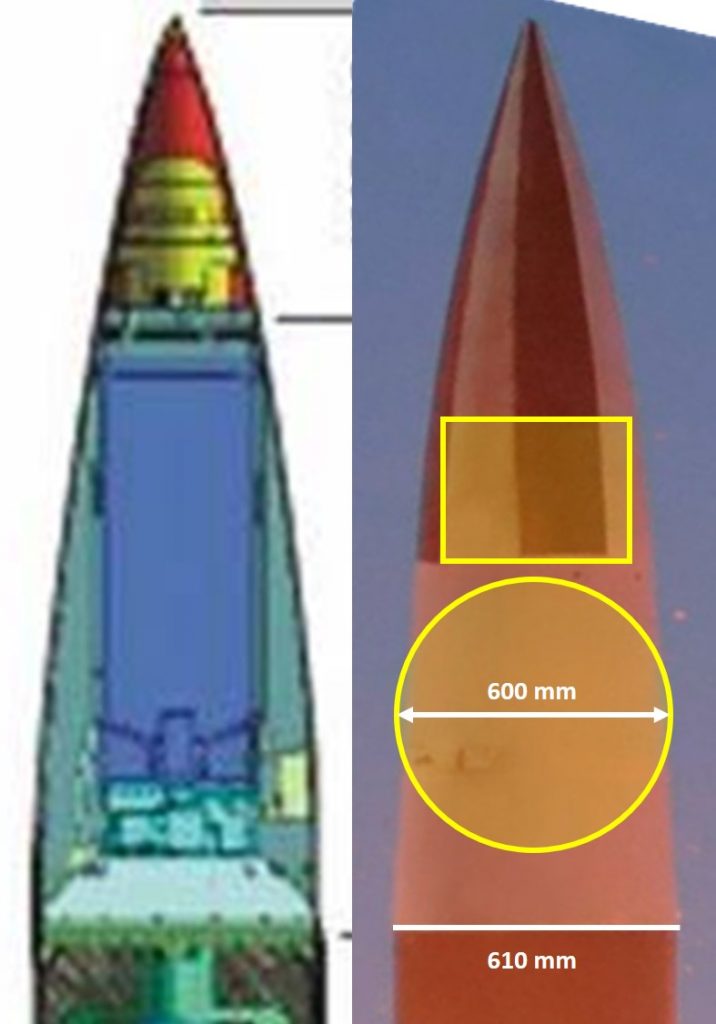
While it is difficult to know if North Korea considers the KN-24 to be a tactical or strategic weapon, we can assess whether the missile has the capacity to carry a nuclear weapon. If the KN-24 is a near-clone of the US ATACMS, which has a diameter of 610 mm, the missile’s payload compartment is too narrow to accommodate the roughly 600-mm-diameter, spherical nuclear explosive device North Korea displayed in February 2017. The diameter of the payload compartment where the nuclear bomb would be placed is only 540 mm, as depicted in Figure 5. In order to fit the 600-mm-diameter nuclear weapon into the warhead section, which is roughly 20 percent narrower than the missile’s diameter, the KN-24’s main body must be at least 700 mm, perhaps as large as 750 mm. This would be consistent with estimated dimensions based on the KN-24’s maximum range during testing.
While the KN-24 is likely larger than ATACMS, and large enough to carry a North Korean nuclear device, it is far from clear if North Korea intends to arm the missile with nuclear weapons. However, it seems apparent that we cannot dismiss the possibility that, at a future date, Pyongyang will look to make the KN-24 dual capable.
- [1]
“Supreme Leader Kim Jong Un Observes Demonstration Fire of Tactical Guided Weapon,” KCNA, March 22, 2020.
